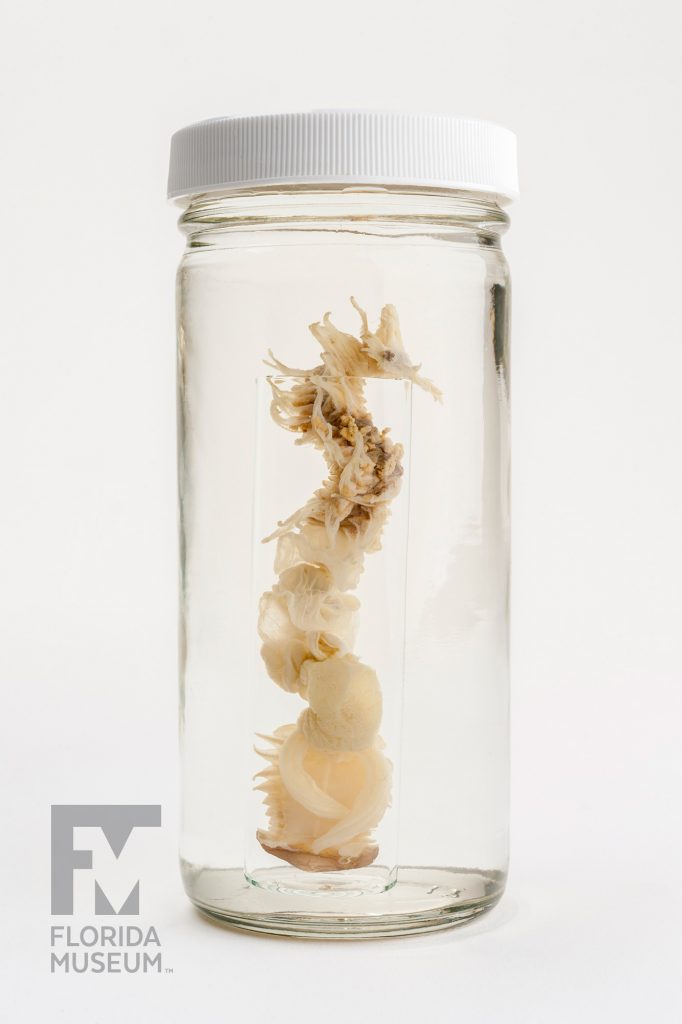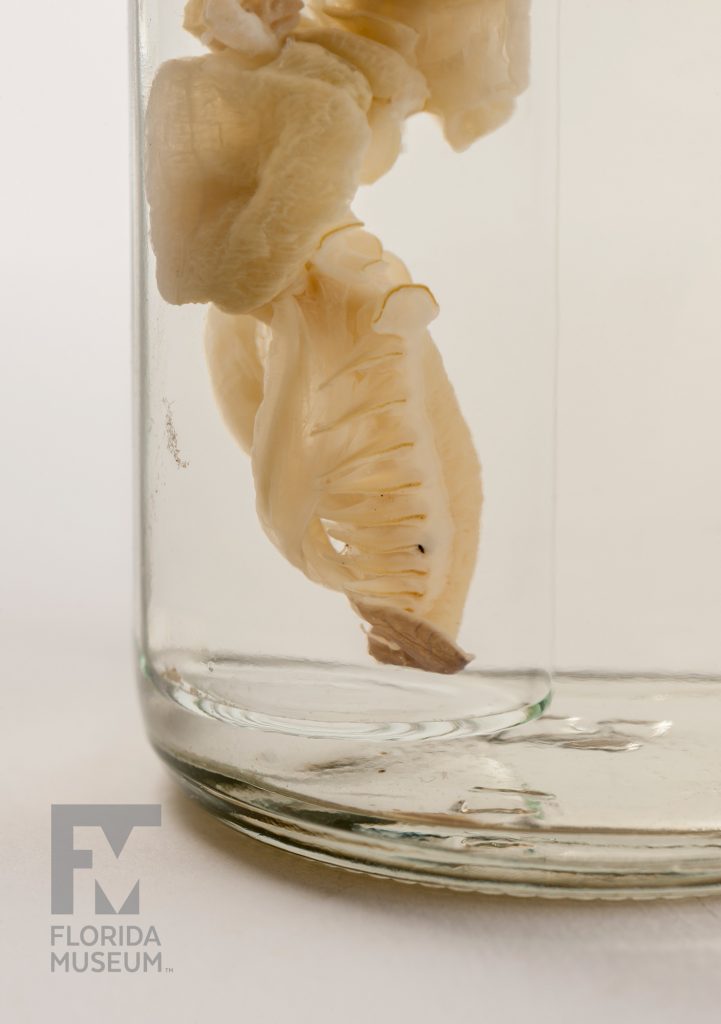Chaetopterus pump water through their parchment tube and filter small plankton through a mucus net they hold. Their tube is home for other organisms such as crabs and other worms.
Summary
Segmented Worm (Chaetopterus pergamentaceus)
From Arecibo, Puerto Rico, Apr. 2015
Collection
Story
Chaetopterus is a group of ocean-dwelling annelid worms, distantly related to our more familiar earthworms. They don’t look very much like earthworms, and that is because they have evolved unusual, special body parts for filter feeding.
Chaetopterus make a filtering net out of mucus to capture food. The long arm or wing-like structures secrete and support this net and hold it open inside their tube to capture food particles. Their three fan-like segments in the middle of their bodies function much like pistons, and pull water full of nutrients through one end of their tube and over the net to capture delicious plankton and other particles. The water then flows out of the other end of the tube. When they have filled their net full of food, they roll it up using a cup-like structure on their back, and it is moved to the mouth by the cilia, tiny hairs that sweep the ball forward. Once the ball arrives at the mouth, Chaetopterus eats the whole package, mucus and plankton and all, and the process begins again with a new net.
Chaetopterus bodies are highly efficient filter-feeding machines. Engineering experiments have shown that maintaining constant flow through a tube requires exactly three pistons, and all 31 species of Chaetopterus living in tubes have exactly three fan or piston-like segments.
The ends of their tubes provide homes for sponges, algae and hydroids, which are colonial relatives of jellyfish and coral. Inside the tubes, you will often find pairs of crabs and tiny scale worms. Chaetopterus worms are an important part of the marine ecosystem all around the world. Their filter-feeding helps clean up the water, and brings nutrients from the water column down to the sediment for other animals living there.
Jenna Moore
Graduate Student, Invertebrate Zoology*
University of Florida
Read by:
Mandy Bemis
Assistant Collection Manager, Invertebrate Zoology*
Florida Museum of Natural History
Exhibit
On display Sept. 23, 2017-Jan. 7, 2018, Rare, Beautiful & Fascinating: 100 Years @FloridaMuseum celebrated the Museum’s rich history. Each Museum collection was asked to contribute its most interesting items and share the stories that make them special. Though the physical exhibit is closed, this companion website remains online, providing an opportunity to experience the Florida Museum’s most treasured specimens.
Exhibit Area: Objects Tell Stories
Theme: Surprising Biodiversity
 Want to see more? Explore more than 300 breathtaking color photos of plants, animals, fossils and cultural heritage materials from the Florida Museum of Natural History’s collections in the award-winning book All Things Beautiful available from the University Press of Florida.
Want to see more? Explore more than 300 breathtaking color photos of plants, animals, fossils and cultural heritage materials from the Florida Museum of Natural History’s collections in the award-winning book All Things Beautiful available from the University Press of Florida.
*This title was accurate at the time the exhibit was on display in 2017. Please visit the collection website to verify current staff and student information.


